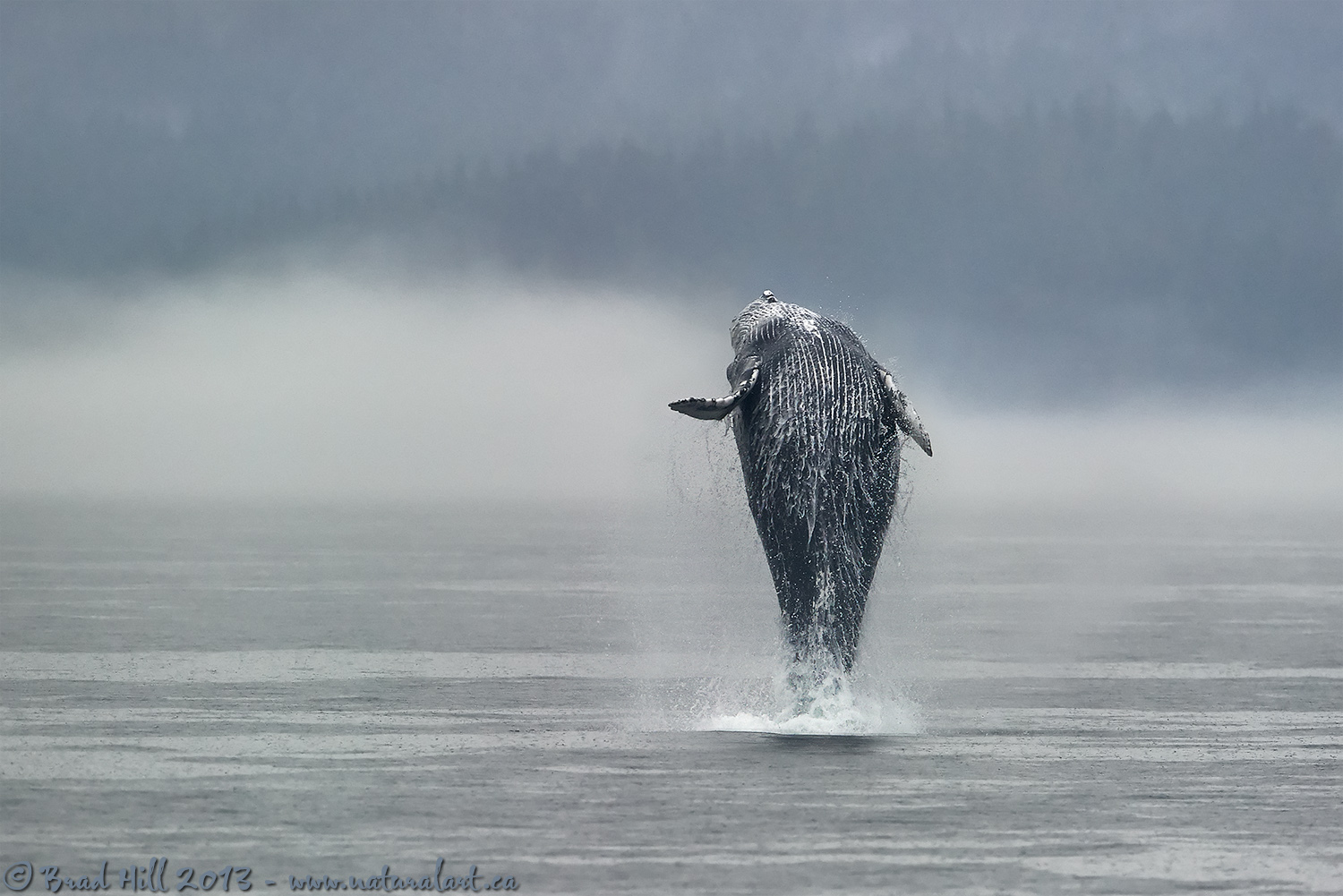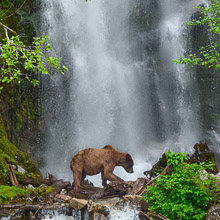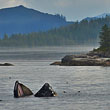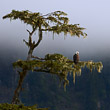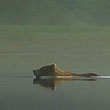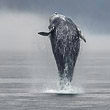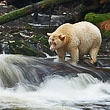Availability: Limited Edition Print - info coming soon!
In the Field
Celebrating the Wild Life 2. Johnston's Strait region of northern Vancouver Island, BC, Canada. August 21, 2011.
This animalscape*/whalescape is the second shot of a 7-image sequence that took place in just a little under one second in August of 2011. The first image in this sequence is the introductory shot of my Humpback Whales section in my "Marine Mammals" gallery and can be viewed right here. The remainder of the sequence can be viewed beginning here. The field notes listed under the first image in this sequence outline all the challenges I faced while capturing this series of shots.
During seminars, slideshows, lectures, or even casual conversations with other photographers I'm often asked which of my images is my all-time favourite. I usually reply with something like..."the next one". And there's some truth to this - one of the great things about wildlife photography is that there's always strong anticipation and enthusiasm about that "next" image! It's also equally true that while I normally do have ONE favourite image at any one instant in time, but it changes ALL the time. But I have less trouble giving a definitive and non-varying answer to the question "Which is your all-time favourite sequence of images?" Well...this shot is part of that favourite sequence! I hope that sometime in the future I can say I have a sequence I like better than this one, but if I don't...well...I could live with that.
So...while this whole sequence captures less than a second of my total lifetime and life experiences, it's indelibly imprinted in my mind and seeing this sequence of images never fails to bring a smile to my face.
My favourite shot in the sequence? I think it's this one - although the humpback's head is already "falling away" in this shot, I love the graceful look of the pectoral fins. How a 40-ton animal can appear graceful is definitely one of the wonders of the natural world!
Here's a higher resolution (2400 pixel) version of this spectacular breach:
• Celebrating the Wild Life - 2 of 7: Download 2400 pixel image (JPEG: 1.2 MB)
ADDITIONAL NOTES:
1. This image - in all resolutions - is protected by copyright. I'm fine with personal uses of it (including use as desktop backgrounds or screensavers on your own computer), but unauthorized commercial use of the image is prohibited by law. Thanks in advance for respecting my copyright!
2. Like all wildlife photographs on this website, this image was captured following the strict ethical guidelines described in The Wildlife FIRST! Principles of Photographer Conduct. I encourage all wildlife photographers to always put the welfare of their subjects above the value of their photographs.
3. This image was captured during my "Humpback, Orcas, Sea Lions & More" photo tour in August of 2011. Each year I offer trips into two different parts of the Great Bear Rainforest as well as one to photograph aquatic mammals and oceanscapes near the northern tip of Vancouver Island. And, in selected years, I also offer photo tours to locations to capture other highly sought-after subjects, such as various owl species of the boreal forest and wildlife of Canada's Arctic. Details about these trips can be found on the Photo Tours page of this website.
*4. For a more detailed discussion of the image types I call animalscapes and enviroscapes (and the subtle distinctions between them), just go here...
Behind the Camera
Celebrating the Wild Life 2. Johnston's Strait region of northern Vancouver Island, BC, Canada. August 21, 2011.
Digital Capture; Compressed RAW (NEF) 14-bit format; ISO 1600
Nikon D3s with Nikkor 600mm f4 VRII lens supported on carbon fibre Gitzo 1348 tripod with Wimberley head.
1/2000s @ f5; +0.67 stop compensation from matrix-metered exposure setting.
At the Computer
Celebrating the Wild Life 2. Johnston's Strait region of northern Vancouver Island, BC, Canada. August 21, 2011.
RAW Conversion to 16-bit TIFF, including first-pass/capture sharpening and levels adjustment using Phase One's Capture One Pro 7.
Further digital corrections on 16-bit TIFF file using Adobe's Photoshop CS6 and Light Craft's LightZone. Photoshop adjustments including selective curves adjustment (using simple layer masks), selective exposure adjustment (using luminosity masking), selective colour saturation and desaturation, and final sharpening for web output. Final contrast/tone tweaking performed with LightZone using the tonemapper/re-light tool and the zonemapper tool.
Conservation
Celebrating the Wild Life 2. Johnston's Strait region of northern Vancouver Island, BC, Canada. August 21, 2011.
Ten percent of the revenue generated by this image will be donated to Raincoast*.
Species Status in Canada**: Threatened - North Pacific population (May 2003).
Humpback Whales (Megaptera novaeagnliae) are active, acrobatic whales that can throw themselves completely clear of the water (a behaviour known as breaching) and will swim on their backs with both flippers in the air. Humpbacks are large (up to 14m - or 46 feet - in length and 40 tonnes in weight) and with huge flippers.
Humpbacks are found in tropical, temperate, and sub-polar waters around the world. They are found on both the east and west coasts of North America. The North Pacific population has been estimated at between 6,000 and 8,000 individuals, but only a few hundred of these are found in the waters off the coast of British Columbia.
While Humpbacks are recovering from the damage done to their populations by commercial fishing, the are still subject to a variety of threats from human activities, including becoming entangled in fishing nets, noise and chemical pollution and habitat destruction.
*The Raincoast Conservation Society (and Foundation) is an effective and efficient organization that has been fighting for protection of this unique habitat. If you are looking for a meaningful way to contribute to the conservation of this amazing ecosystem, Raincoast will provide maximal "bang" for your conservation dollars.
**as determined by COSEWIC: The Committee on the Status of Endangered Wildlife in Canada













